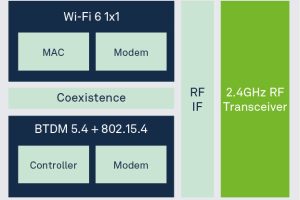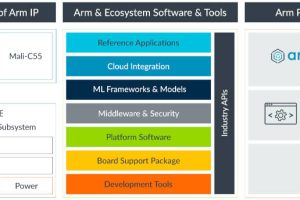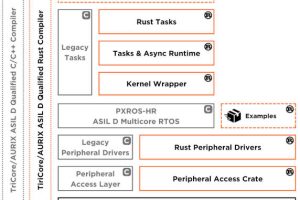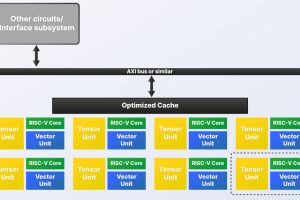
Warren: Xerxes, thank you for agreeing to let me me pick your brain. First, can you give me a little background on yourself and how you got into the IP business?
Xerxes: I started a company in the mid 90’s that provided analog and mixed signal design services. We noticed that some customers sought similar design requirements, hence we moved into the IP business model. My first success was with Xentec Inc. in 1997, licensing analog and mixed-signal IP such as ADC’s/DAC’s, PHY’s, and other cores.
WS: So, how would you rate the experience of working in IP versus other jobs you’ve held?
XW: The experience is different, as IP is a tough business and requires capital, great technology, strong industry partnerships, and patience. To win the first five to ten customers is the toughest. In particular, if you have unique technology, it is hard to close business until you have a strong track record and proof of concept. Financing an IP company is very difficult as well. Initially, investors didn’t believe in the IP licensing model; now it is much more mature and it is a bit easier, although the Venture Capital funds have dried out.
WS: There has been tremendous consolidation of the IP market in recent years, with a number of the small and medium players getting gobbled up by the big guys. What does this tell us?
XW: The endgame in the IP business is usually to get bought by a bigger player. IP industry consolidation supports the concept that this is a tough business.
WS: The tech media of today, at least in the US, seems to have drastically shrunk. Famous editors are now working for product companies. How do you get your message out to customers in such an environment?
XW: Good question. I think the best way is through partners and customers. The IP world is a small world, so if you have a couple of good success stories, they move through the customer base pretty quickly. Of course, it works the other way as well; if you mess up, it takes some time before you can regain your credibility. We use web portals such as ChipEstimate and Design & Reuse to be most effective, and we also use our quarterly newsletters to reach out to our customers, partners, and prospects. Attending industry-specific tradeshows has been fruitful as well.
WS: What’s the biggest change you’ve seen in the market since the meltdown of late 2008?
XW: Customers are cost-conscious and negotiate tough terms, as their customers are doing the same with them. Sidense has over 100 customers, so we are pretty used to negotiating license deals that make sense to both sides. We understand how customers think and we make sure we are in line with their financial and technical needs.
WS: It wasn’t long ago that many IP companies were worried about licensing IP to China. Has that changed post-2008?
XW: I think so. I believe that if you are not licensing your IP to China, you’re probably going to miss out on a major piece of the future market. China’s IP policies are changing for the better, but there is still quite a bit of room for improvement.
WS: Let’s bring out our crystal ball for a moment. What you predict will be the biggest, most disruptive change in semiconductors in the next 3 years?
XW: I think the most disruptive change would be the introduction of the 14nm FinFET technology.
WS: It seems like there just aren’t any hot new startups anymore, while even industry titans are merging, as we saw with Texas Instruments’ recent acquisition of National Semiconductor. Are you apprehensive about such consolidations in the semiconductor industry?
XW: It seems there are two comments or questions here. Let me say first that I am disappointed in the lack of semi startups. Most of the people that are founding semi startups are in their forties and fifties. Very few are in their thirties. This is very concerning.
Regarding the merging of the titans, I believe in the laws of nature. Consolidations in the semiconductor industry, to me, are natural phenomena, just like new growth. I am not apprehensive at all. The way I look at it, the end volume of chips will continue to increase as long as there are products. Sidense’s revenue depends on licensing as well as royalties. So, as long as there are wafers and products being shipped, Sidense continues to prosper. Sidense’s NVM products are highly differentiable and customers continue to pay royalties. Also, with consolidations, we deal with fewer semiconductor companies, which results in lower operating costs, including legal, accounting, technical support, etc.
WS: What would be your recommendations for new EE grads coming into the semiconductor world today?
XW: Do a few work terms while in University and get some real-life experience before you graduate.
WS: Before we go: three words that you would use to describe the semiconductor industry today.
XW: Changing, disruptive, and creative.
WS: Xerxes, thanks again.
About Xerxes Wania, CEO and President, Sidense.
Xerxes Wania has over 20 years of experience in marketing, sales and engineering in the semiconductor intellectual property industry. Prior to Sidense, Xerxes was Director of Mixed-Signal Marketing at Synopsys (Nasdaq: SNPS) where he was involved in marketing and business development activities for Synopsys’ mixed-signal semiconductor IP products. Before Syn opsys, Xerxes was President of inSilicon Canada and Vice President of Mixed-Signal Business for inSilicon (Nasdaq: INSN) worldwide. inSilicon was a semiconductor IP market leader before being acquired by Synopsys in 2002. Xerxes successfully grew inSilicon Canada into a profitable business, and in 2001 it was listed among the Top 50 of Canada’s Hottest Startups. Xerxes was also previously the founder and CEO of Xentec, Inc., a successful intellectual property company in Ontario, Canada.
Warren Savage, President and CEO of IPextreme, is a well-known and published authority in the field of semiconductor intellectual property.
He has a long history of pushing the envelope of design methodology from his work in fault tolerant computing at Tandem Computers in the 1980’s and driving reliable design methodologies into commercial practice at Synopsys for its DesignWare IP product in the 1990s. Much of his thinking became embodied in the seminal book on IP reuse, the Reuse Methodology Manual.
See also:
Warren Savage On: Catching up with Hal Barbour
Warren Savage On: Catching up with Stephen Fairbanks
Warren Savage On: Catching up with Jack Browne
 Electronics Weekly Electronics Design & Components Tech News
Electronics Weekly Electronics Design & Components Tech News



